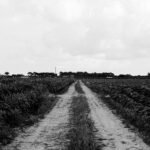Foraging Fun: Discovering Wild Nuts and Seeds
Foraging for wild nuts and seeds is a fun and rewarding activity that can connect you with nature and provide you with delicious and nutritious snacks. However, it’s essential to know how to identify the plants that produce these nuts and seeds to avoid accidentally consuming something toxic. In this article, we’ll explore some tips for identifying edible wild plants and how to harvest and enjoy their nutty goodness.
Nature’s Bounty: Tips for Identifying Edible Wild Plants
One of the easiest ways to identify edible wild plants is to look for plant families that produce commonly consumed nuts and seeds. For example, the hickory family is known for producing hickory nuts, while the oak family produces acorns. Other plants like chestnuts and walnuts have distinct characteristics that can help you identify them. It’s essential to consult a reliable field guide or an expert before consuming wild nuts or seeds to ensure you’re not eating something toxic.
When identifying edible plants, it’s also crucial to pay attention to the plant’s leaves, bark, flowers, and fruit. For example, the black walnut tree has dark, deeply grooved bark and produces round, green fruit that eventually turns brown and hard. Additionally, some plants have similar-looking poisonous cousins, like poison ivy and Virginia creeper. Therefore, it’s necessary to use caution and be sure of your identification before consuming any wild plant.
Nutty Goodness: Harvesting and Enjoying Wild Seeds
Once you’ve identified a nut or seed-bearing plant, it’s time to harvest them. Depending on the plant, you may need to use gloves or a tool to remove the nuts or seeds. For example, shagbark hickory nuts have a thick outer shell that can be challenging to crack open with your hands. You may need to use a nutcracker or a hammer to crack the shell open and access the nut inside.
Once you’ve harvested your nuts or seeds, it’s time to enjoy them. You can eat them raw, roast them in the oven, or add them to your favorite recipes. For example, roasted acorns can be ground into a flour-like consistency and used to make pancakes, bread, or other baked goods. Additionally, you can use nuts and seeds as toppings for salads or oatmeal or mix them into a trail mix for a tasty and nutritious snack.
Foraging for wild nuts and seeds is an exciting way to explore nature while indulging in delicious and nutritious snacks. However, it’s essential to use caution and know how to identify the plants that produce these nuts and seeds to avoid consuming something toxic. With these tips for identifying edible plants and harvesting and enjoying their nutty goodness, you can enjoy the bounty of nature safely and deliciously.




